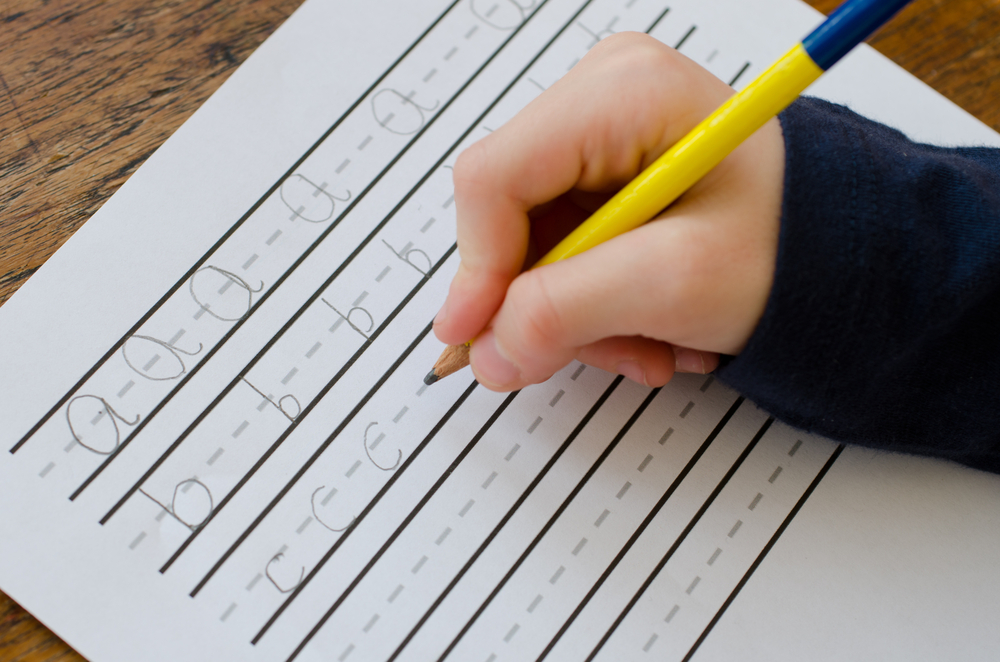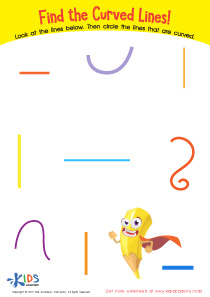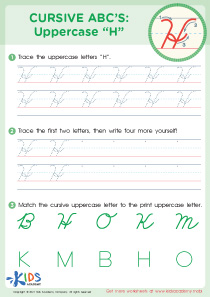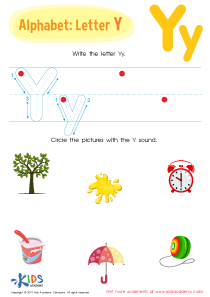Cursive handwriting practice Alphabet Worksheets
4 filtered results
-
From - To
Enhance your child's penmanship with our engaging "Cursive Handwriting Practice Alphabet Worksheets" from Kids Academy. Perfect for young learners, these worksheets provide a structured way to master cursive writing from A to Z. Each sheet is designed to help kids develop their fine motor skills, improve handwriting fluency, and gain confidence in writing cursively. Featuring clear instructions, tracing exercises, and ample practice space, these printable worksheets transform learning into a fun-filled activity. Ideal for home or classroom use, our alphabet cursive practice sheets support early learning success while making writing an enjoyable adventure.
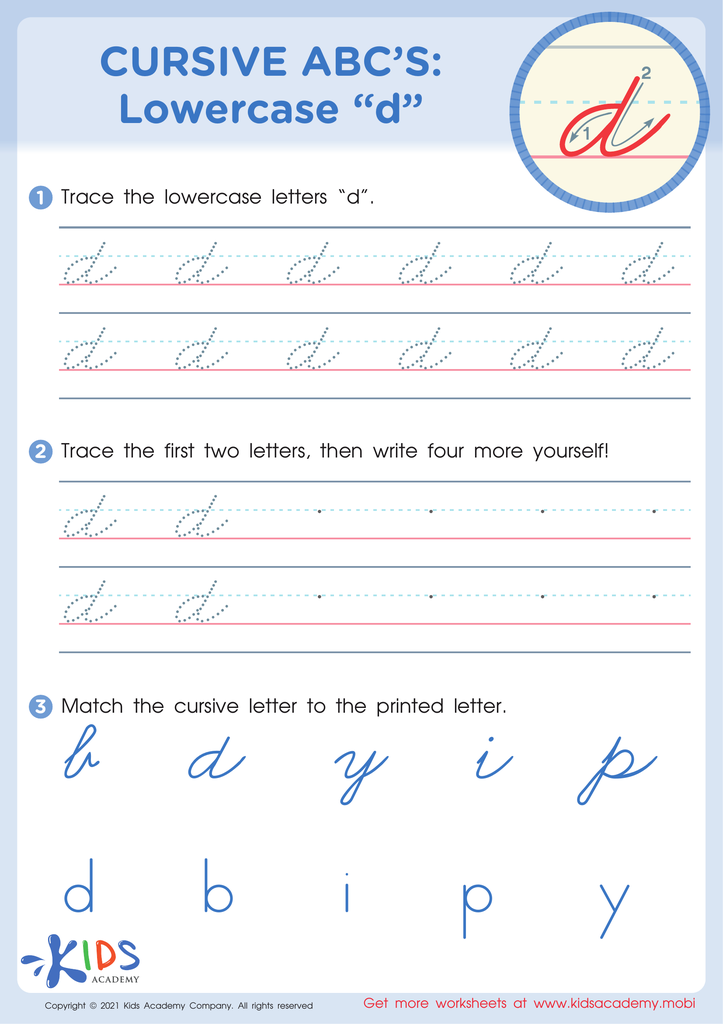

Cursive ABCs: Lowercase d
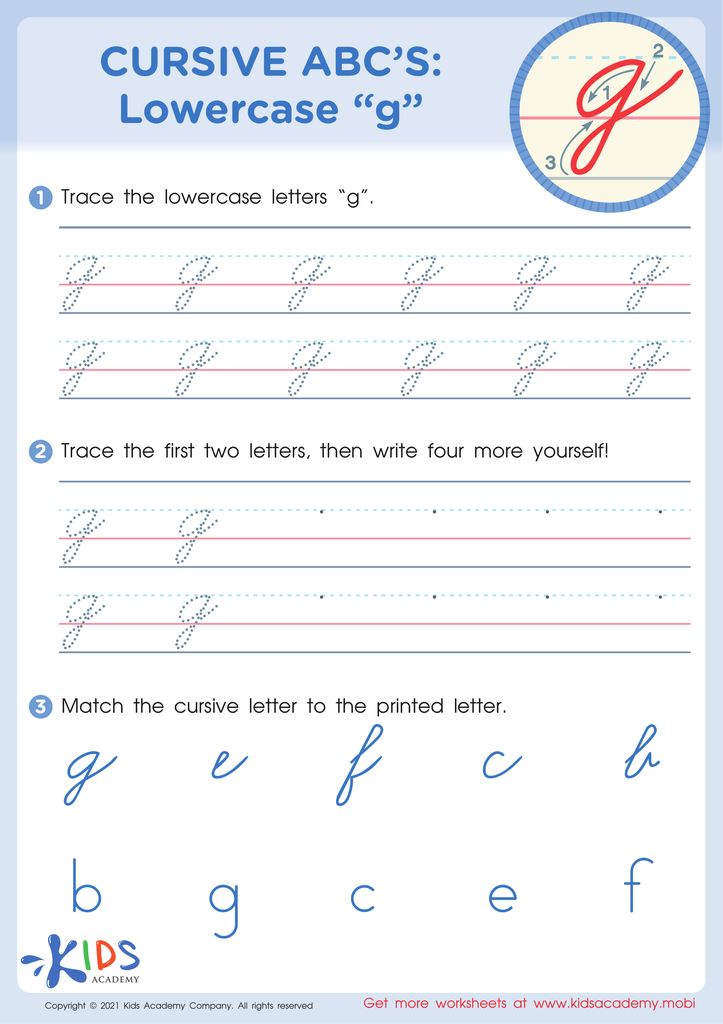

Cursive ABCs: Lowercase g
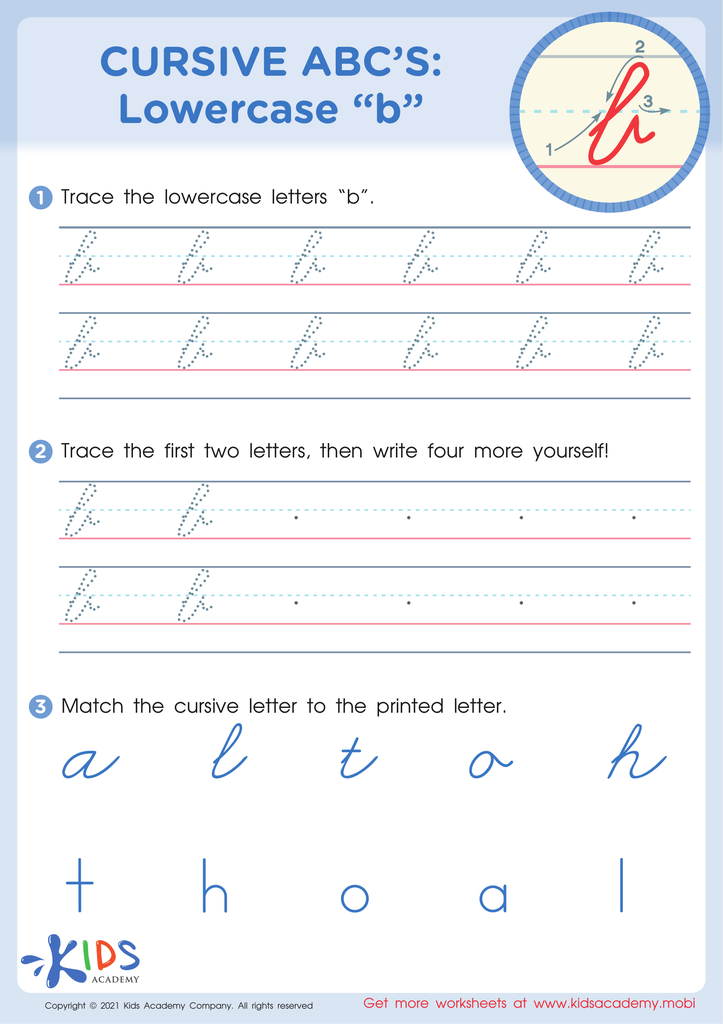

Cursive ABCs: Lowercase b
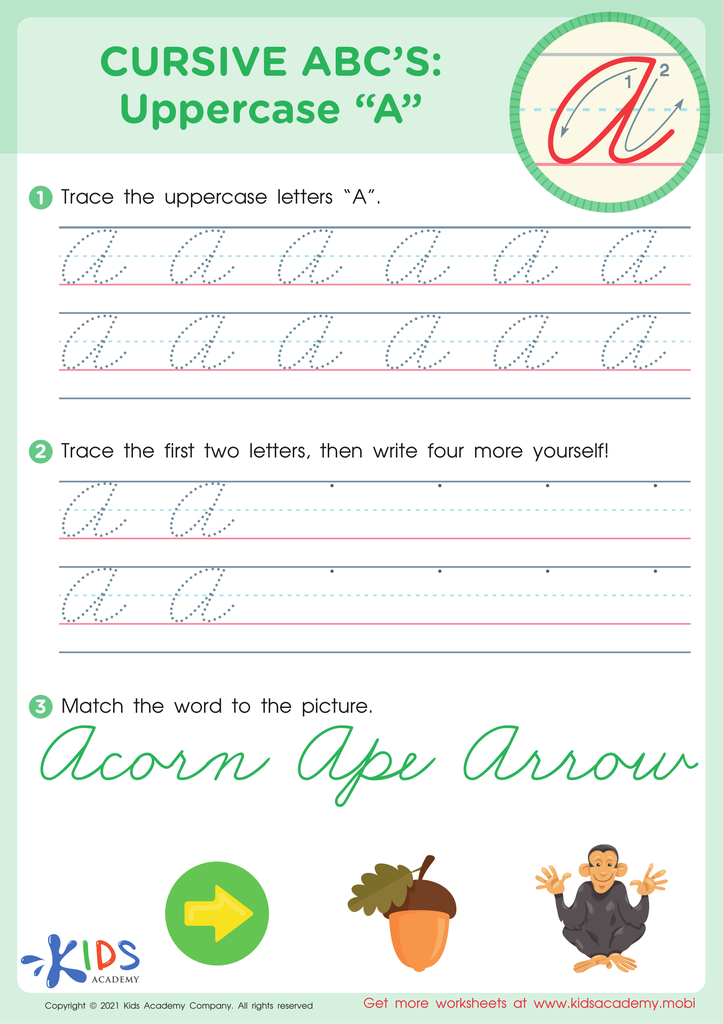

Cursive ABCs: Uppercase A
Parents and teachers should care about cursive handwriting practice for several significant reasons:
Firstly, cursive writing enhances fine motor skills. Forming the loops, curves, and connected letters requires a level of hand-eye coordination that benefits younger students.
Secondly, learning cursive helps with cognitive development. It trains the brain to integrate sensation, movement control, and visual information in a unique way, which is different from typing.
Another crucial aspect is its contribution to spelling and reading comprehension. Writing in cursive can aid in better letter recognition and improves the speed and legibility of writing, especially in our digitally-dominated world.
Moreover, cursive writing can boost memory retention. The act of physically writing things down, as opposed to typing them, enhances the ability to remember the material.
Emotional benefits shouldn’t be overlooked either. Mastering cursive handwriting can be a source of pride and a marker of progress for children, which can boost their confidence.
Finally, cursive is a part of our cultural heritage. Documents like historical manuscripts, letters, and some academic citations require cursive literacy to fully appreciate their authenticity.
In summary, the myriad benefits from developmental to cognitive, emotional, and cultural make cursive handwriting practice a valuable endeavor for both parents and teachers to support.








